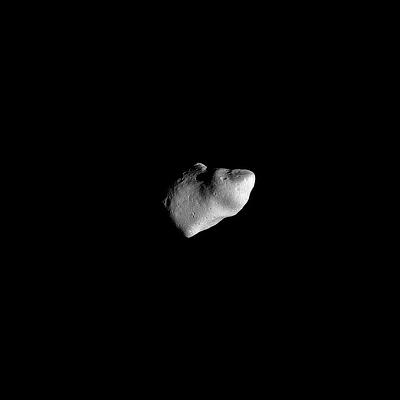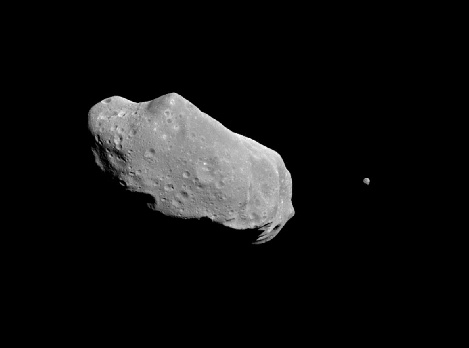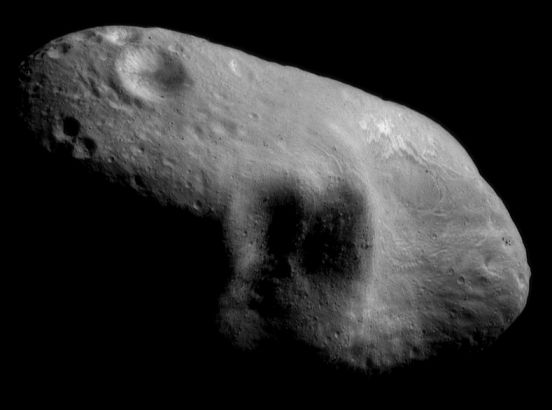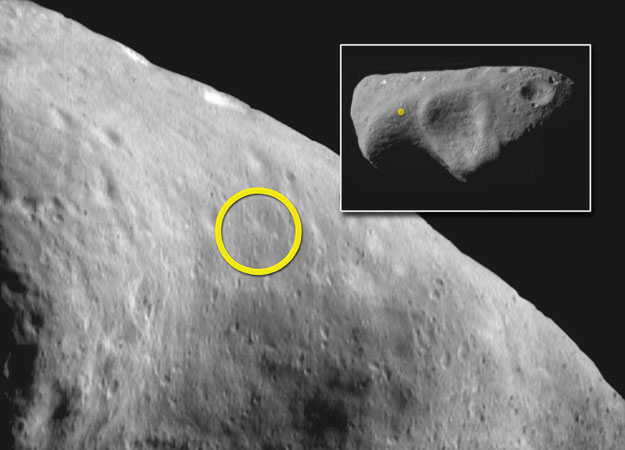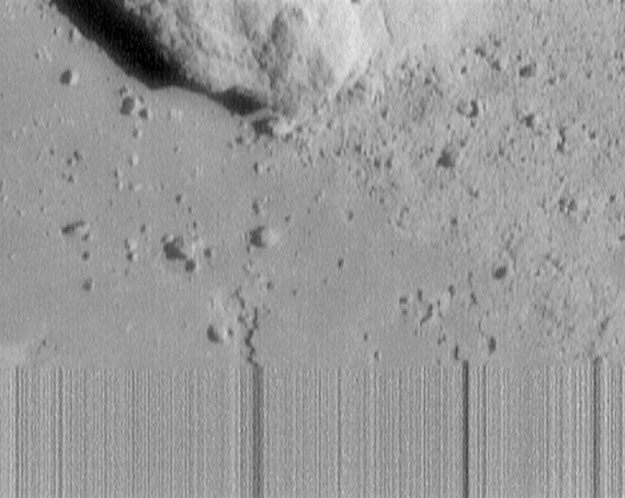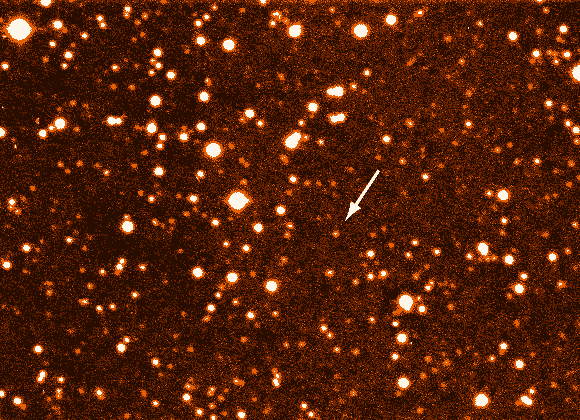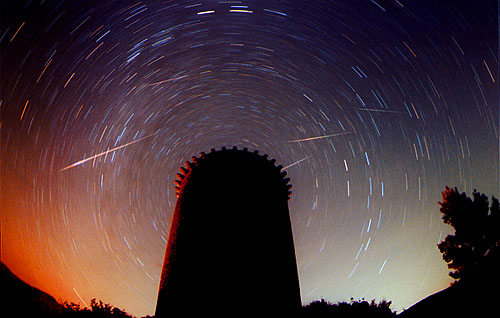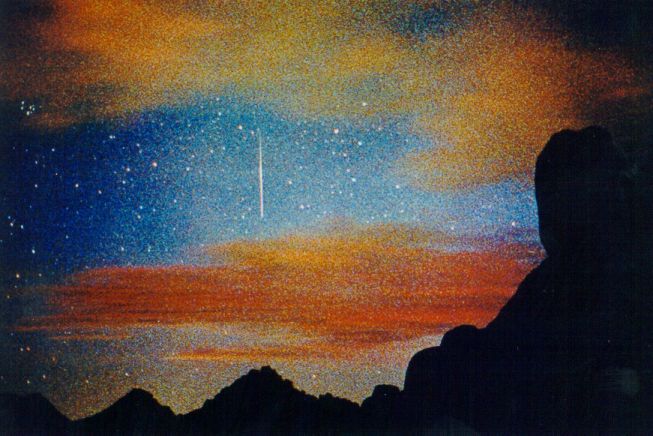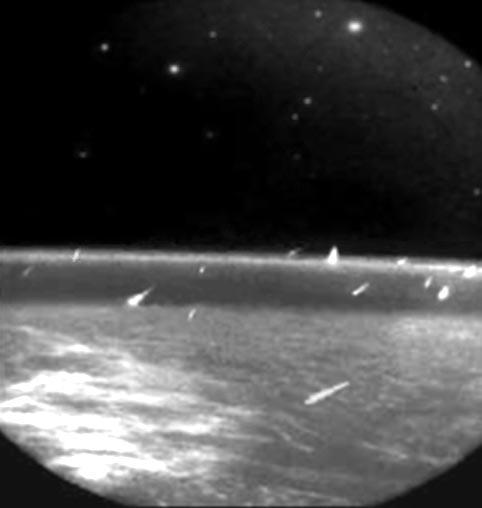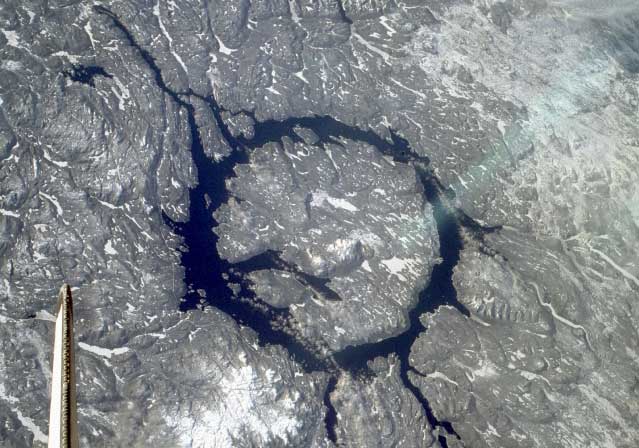Meteorites are larger objects that his the ground. We see signs of this on almost every object in the solar system.
Much more important
What killed the dinosaurs?
| Alan Hildebrand (GSC for a while) found a 65 million year old, 112 mile wide ring structure (the Chicxulub crater) still detectable under
layers of sediment of the Yucatan Peninsula region of Mexico. Crater is consistent with the
impact of an object of sufficient size (6 to 12 miles wide) to cause the global disruptions. |
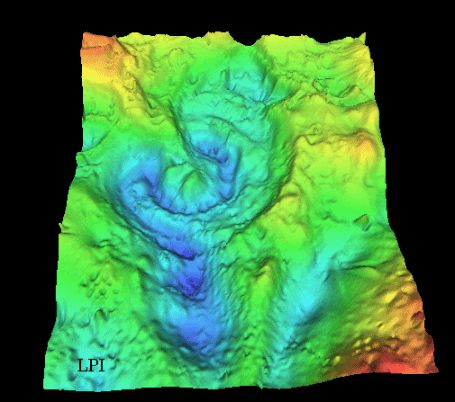 |
This must have been an asteroid. Can it happen again?
| Apollo asteroids: cross earth's orbit (and may collide occasionally!)
Eros used to measure Earth-Sun distance very accurately
All small < 30 km radius
|
 |
| Toutatis came within 1500000 km (4x distance of moon) last fall. Expect major collision ~ 100000 years |
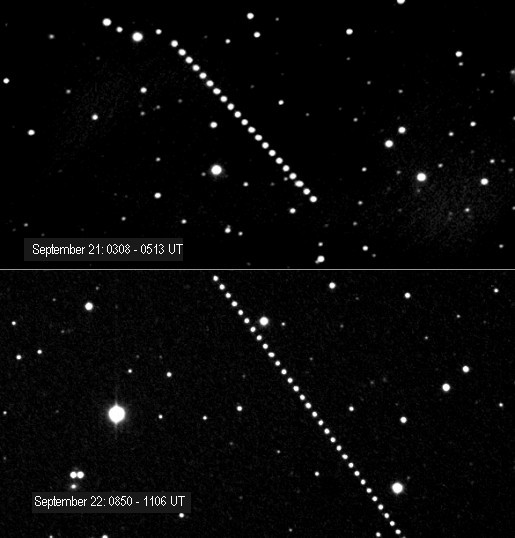 |
(and a free cup of coffee to anyone who knows who Toutatis is!)
COMETSThe Hairy Stars: this is Arend-Roland |
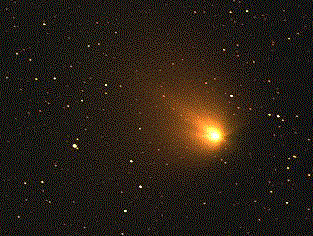 |
Mostly very eccentric orbits, long periods, not in plane of ecliptic only visible near the sun.
| "Dirty Snowballs" H2O + dust + CO2
Water boiling causes breakup? Some comets observed to have jets, which can alter orbits
Low mass, cannot retain gas (this is Mrkos)
|
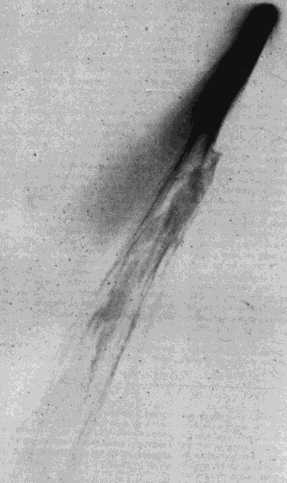 |
| Breakup need not be just material being blown out behind: previous encounter can give rise to material in same orbit: this is Shumacher-Levy |
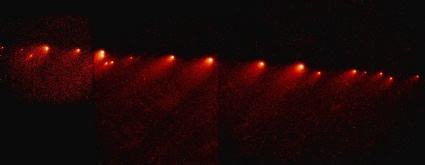 |
| e.g. Arend-Roland |
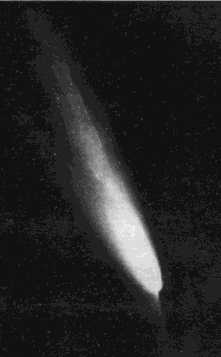 |
| Meteors are assumed to originate in comets which break up. e.g.
the stuff left behind by
Swift-Tuttle annually create the
Perseids this is particularly bright every 33 years (tho. less so now). Perseid meteor in an aurora: |
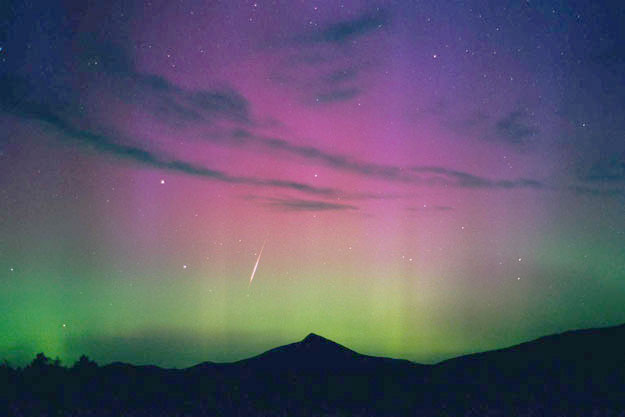 Credit & Copyright:
Jimmy Westlake,
Colorado Mountain College) |
| This is comet LINEAR, |
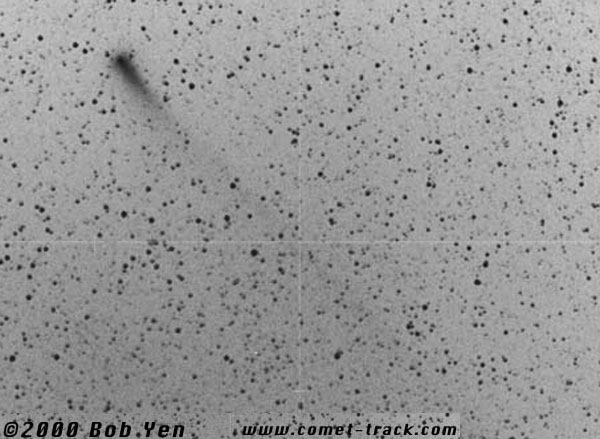 |
which was going to be quite spectacular |
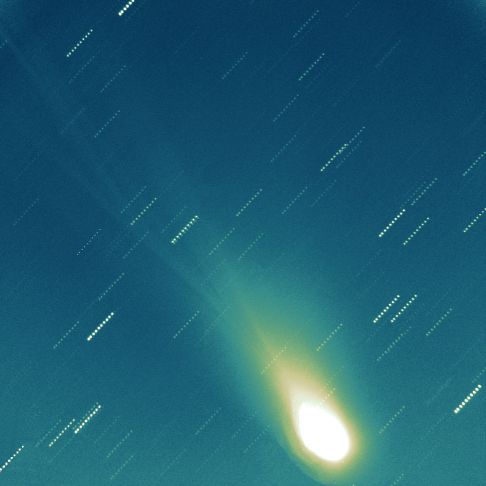 |
However it didn't work out that way! |
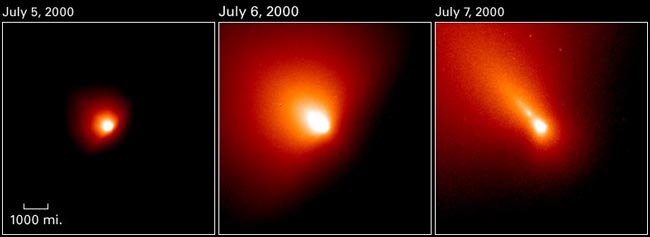 |
THen it shattered into pieces!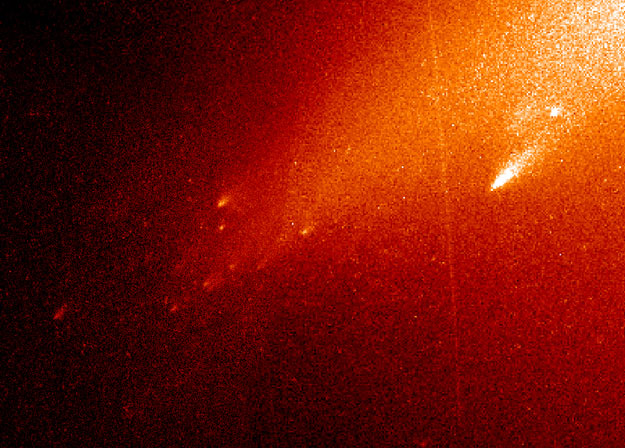
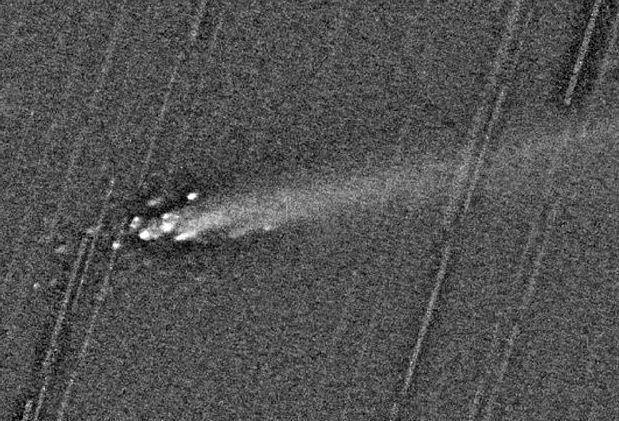
| and finally it has just evaporated! |
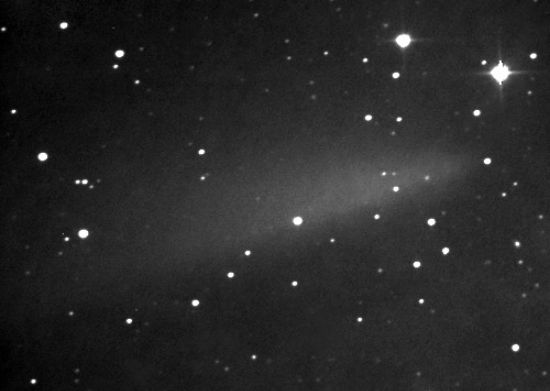 |
| Best close-up of a comet is of Wild: note the "outgassing". Diam is about 5 km |
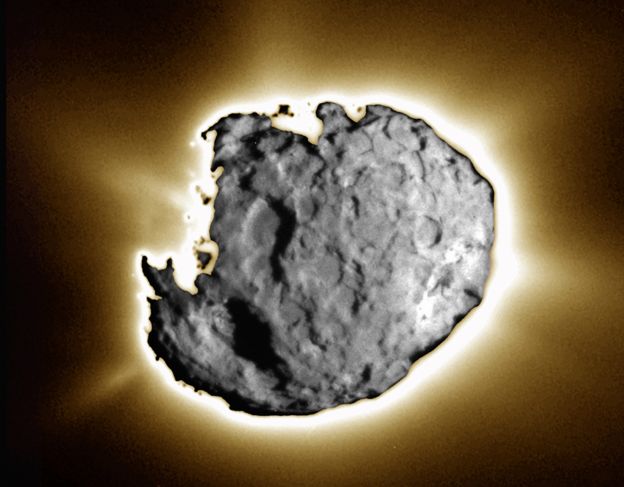 Going Wild
Credit: Stardust Team, JPL, NASA
|
Other comets have different problems. Many start off with a very small velocity, so they fall almost directly towards the sun. The SOlar and Heliospheric Observatory (SOHO) has found 102 new comets.
| Most of the comets discovered with SOHO are "sungrazers". With the heat and tidal forces, they aren't going to survive their close passage. |
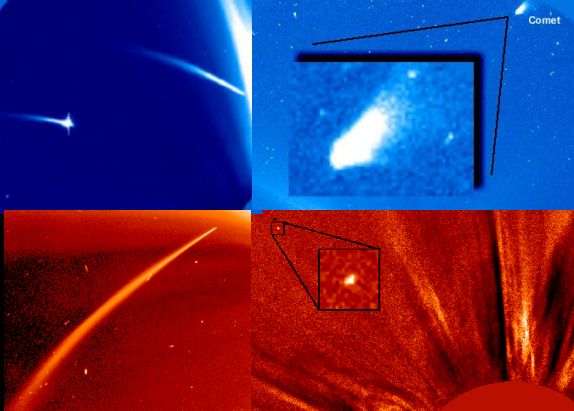 |
and here is another one that isn't going to make it!

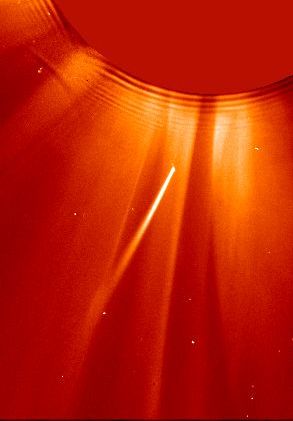
Where do comets come from?
| Most have very long periods: Great Comet of 1858 had period of over 100000 years, very few have many repeats, (Halley's comet at 76 years and ∼30 repeats is an exception)
Oort cloud 105 A.U. from sun
Perturbations by passing stars can start comets falling towards sun.
No angular momentum, so must start from rest. |
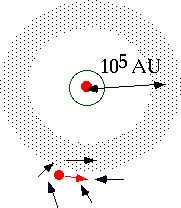 |
Finally the most distant object we have seen:
Sedna:
| Sedna is almost at its closest; 10,000-year orbit takes it into the Oort cloud. Probably not a planet in the usual sense. |
|
What exactly is a planet? (Sedna and Quaoar are "objects") No easy answer: conventionally we take original 8 as planets, and say everything else is not (i.e. Pluto isn't).
So where did the solar system come from....?




